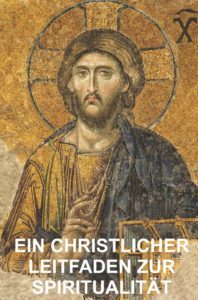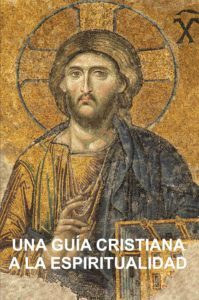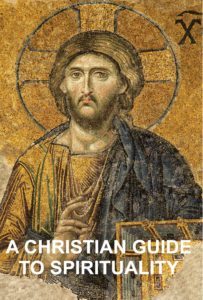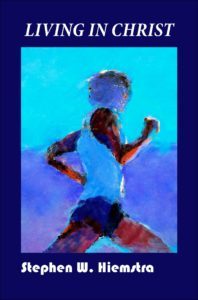Stephen W. Hiemstra's Blog, page 137
December 13, 2020
Prayer Day 4
By Stephen W. Hiemstra
Eternal and Compassionate Father.
Help us to accept You into all aspects of our lives.
Thank you for creating us in your image.
Bless our families.
Forgive our sin and rebellion.
In the power of your Holy Spirit, restore to us the joy of your salvation.
In Jesus’ name. Amen.
Prayer Day 4
Also see:
Believer’s Prayer
Other ways to engage online:
Author site: http://www.StephenWHiemstra.net
Purchase Book: http://www.T2Pneuma.com
Newsletter: https://bit.ly/Dec_2020
The post Prayer Day 4 appeared first on T2Pneuma.net.
Oración Dia 4
Por Stephen W. Hiemstra
Eterno y compasivo Padre,
Ayúdanos a aceptarte en todos los aspectos de nuestras vidas.
Gracias por crearnos a Tu imagen.
Bendice a nuestras familias.
Perdona nuestros pecados y rebeliones.
En el poder del Espíritu Santo, restáuranos el gozo de Tu salvación.
En el nombre de Jesús. Amén.
Oración Dia 4
Ver también:
Gospel as Divine Template
Otras formas de participar en línea:
Sitio del autor: http://www.StephenWHiemstra.net,
Comprar Libro: http://www.T2Pneuma.com.
Boletín informativo: https://bit.ly/Dec_2020
The post Oración Dia 4 appeared first on T2Pneuma.net.
Gebetstag 4
December 11, 2020
What Should We Do?
“So God created man in his own image, in the image of God he created him; male and female he created them.” (Gen 1:27)
By Stephen W. Hiemstra
Have you accepted Christ into all aspects of your life?
Walking into an office, whose picture normally hangs on the wall? The picture on the wall usually depicts the one casting the vision of the company. It could be the founder, the current president, or a chief executive. Why? It is helpful to remind us who is in charge and what we are about.
Assume you are a new office manager. Suppose when your supervisor was out of the office, a stranger walked in and questioned your supervisor’s instructions, saying—you are in charge now: take it easy. Then, being naive, you declared independence, kicked the feet up on the desk, and slept all afternoon. What would happen when your supervisor returned? What would you think then if the supervisor, even as you are being fired and walked to the door, made a promise—when my oldest son comes, you can come back and he will make sure that stranger does not bother you anymore?
This is essentially the story of Adam and Eve. The story has three parts: creation with great expectations (hired), fall into temptation (fired), and promise of restoration through divine intervention (second chance).
Creation. Just like the business with the picture on the wall, in our hearts we have a picture of God because God created us in his image. This family resemblance gives us human dignity. We were created with great prospects and a bright future.
The emphasis in Genesis 1:27 is on being created in the image of God together with our spouses. We were created to live in families with one man and one woman. To prevent any misunderstanding, Adam and Eve were blessed, put in charge on earth, and given a mission: “Be fruitful and multiple.” (Gen 1:28)
Fall. God placed Adam and Eve in the Garden of Eve with just one restriction that came with a penalty: do not eat of the tree of the knowledge of good and evil under penalty of death (Gen 2:17). In deceiving Eve, Satan questioned God’s integrity saying that the penalty was a lie: you will not die (Gen 3:4). In giving into this temptation, Adam and Even sinned and rebelled against God. God then expelled them from the Garden of Eden. Left outside Eden, Adam and Eve faced life outside of God’s presence and under the penalty of death.
Restoration. In God’s curse of Satan, he prophesied the coming of Christ. Satan’s usurped kingdom will be over-thrown by a descendant of Eve (Gen 3:15).
What does the story of Adam and Eve say about our identity? Tension arises in our lives because we do not live up to God’s expectations. Our dignity arises from being created in God’s image; yet, we sin and rebel against God. The Good News is that when Christ died for our sins, he overthrew the rule of Satan in our lives and restored our relationship with God, just as it was in the beginning.
What Should We Do?
Also see:
Preface to A Christian Guide to Spirituality
Other ways to engage online:
Author site: http://www.StephenWHiemstra.net
Purchase Book: http://www.T2Pneuma.com
Newsletter: https://bit.ly/Dec_2020
The post What Should We Do? appeared first on T2Pneuma.net.
Que Debemos Hacer?
“Dios creó al hombre a imagen Suya, a imagen de Dios lo creó; varón y hembra los creó.” (Gen 1:27 NBH)
Por Stephen W. Hiemstra
¿Has aceptado a Cristo en total los aspectos de tu vida?
¿Cuando andamos en una oficina, quien es la persona con el retrato en la pared? El retrato de la pared usualmente esta la persona quien creada la vision de la empresa. Tal vez esta el fundador, el presidente actual, o el executivo realmente en control. ¿Por que? Es util a recordarnos quien es en control y los objectivos que guia nuestro trabajo.
Presuma que usted este gerente nuevo de una oficina. Suponga que cuando tu jefe estaba fuera de la oficina, que tu estas visitado por un desconocido quien cuestiono las instrucciones de tu jefe, diciendo—tu tenias en cargo ahora—tomas la vida calma. Entonces, tu estas estupido, declara tu independencia, puso tus pies por el escritorio, y dormi por total la tarde. Que pasaria cuando su jefe regresa? Que va a pensar entonce si tu jefe, aunque el deja te ir y esta caminando te a la puerta, hace una promesa—cuando mi hijo major viene, tu puedes regresar y mi hijo va a asegurar que este estraño no te molesta mas?
Esencialmente esta es la historia de Adan y Eva. La historia tiene tres partes: creación con expectativas grandes (empleado nuevo), caen en tentación (despedido), y promesa de restoration a través de intervencion divina (segunda oportunidad).
Creacion. Exacto como la empresa con la retrato por la pared, en nuestros corazones tenemos una pintura de Dios por que Dios nos creó en su imagen. La aire de familia da nos dignidad humana. Se a creado nos con expectativas grandes y un futuro brillante.
El énfasis en Genesis 1:27 es a ser creado en la imagen de Dios con juntos con nuestro conyuge. Estamos creado a vivir en familias con un hombre y un mujer. A prevenir cualquiera confusion, Adan y Eva fueron bendecido, eran puesto en cargo de la tierra, y se les eran dado un objectivo: “Sean fecundos y multiplíquense”. (Gen 1:28 NBH)
La Caída. Dios puso Adan y Eva en la Jardin of Edén con solamente una limitacion que venir con un castigo: “no comerás, porque el día que de él comas, ciertamente morirás.” (Gen 2:17 NBH) En su decepcion de Eva, Satana cuestionaba la integridad de Dios diciendo que el pena estaba una mentira: “Ciertamente no morirán.” (Gen 3:4 NBH) En descendente a esta tentacion, Adan y Eva pecaron y rebelaron en contra Dios. Entonces Dios los expulsó de la Jardin de Edén. Fuera de Edén, Adan y Eva enfrentaron la vida fuera de la presencia de Dios y bajo de la pena de muerte.
Restauracion. Cuando Dios maldijo Satana, él profesó el viniendo de Cristo. El dijo que el reino usurpado de Satan estaria terminado por un descendent de Eva (Gen 3:15)
¿Que dice la historia de Adan y Eva sobre nuestra identidad? Tension levanta se en nuestras vidas porque no vivimos altura de las expectaciones de Dios. Nuestra dignidad origina en estar creado en la imagen de Dios; pero, nosotros pecamos y revelamos contra Dios. La buena noticia es cuando Cristo murio por nuestros pecados, derrocó el reino de Satana en nuestras vidas y restauró nuestra relacion con Dios, como estaba en el principio.
Que Debemos Hacer
Ver también:
Prefacio de La Guía Cristiana a la Espiritualidad
Otras formas de participar en línea:
Sitio del autor: http://www.StephenWHiemstra.net
Comprar Libro: http://www.T2Pneuma.com
Boletín informativo: https://bit.ly/Dec_2020
The post Que Debemos Hacer? appeared first on T2Pneuma.net.
Was Sollen Wir Machen?

Von Stephen W. Hiemstra
Und Gott schuf den Menschen zu seinem Bilde, zum Bilde Gottes schuf er ihn; und schuf sie als Mann und Frau. (Gen 1:27)
Haben Sie Christus in alle Aspekte Ihres Lebens aufgenommen?
In einem Büro, dessen Bild normalerweise an der Wand hängt? Das Bild an der Wand normalerweise zeigt die Person, die die Unternehmensvision werfet. Es könnte ein Gründer, ein derzeitiger Präsident oder ein Haupt Exekutiv sein. Warum? Es ist hilfreich, sich daran zu erinnern, wem wir verantwortlich sind und worum es uns geht.
Angenommen, Sie sind ein neuer Büroleiter. Angenommen auch, als Ihr Vorgesetzter außer dem Büro war, kam ein Fremder herein und stellte die Anweisungen Ihres Vorgesetzten in Frage, sagend: Sie sind jetzt verantwortlich: Machen Sie es sich gemütlich. Dann erklärten Sie, naiv, die Unabhängigkeit, stellten die Füße auf den Schreibtisch und schliefen den ganzen Nachmittag. Was würde passieren, wann Ihr Vorgesetzter zurückkommt? Was würden Sie dann denken, wenn der Vorgesetzte, selbst wenn Sie gefeuert werden und zur Tür leiten, ein Versprechen abgeben würde—wenn mein ältester Sohn kommt, können Sie zurückkommen und er wird sicherstellen, da
December 8, 2020
Grams: Outpouring of the Spirit

Rollin G. Grams. 2010. Stewards of Grace: A Reflective, Missions Biography of Eugene and Phyllis Grams in South Africa, 1951-1962. Eugene: Wipf & Stock.
Review by Stephen W. Hiemstra
One of the truly remarkable events of 20th century Christianity has been the outpouring of the Holy Spirit through the Pentecostal movement. It is also relatively undocumented. Rollin Grams’ book, Stewards of Grace, works to fill this gap. Rollin is the son of Pentecostal (Assembly of God) missionaries, Eugene and Phyllis Grams, who labored most of their careers in South Africa. He writes their story in their own words. The book is, however, more than an oral history or a travel diary. Rollin writes from the perspective of a biblical scholar who can interpret their experiences in terms of the biblical tradition.
Why might we, as Christians, read be interested in the lives of these quiet missionaries? Grams writes:
The Story of Eugene and Phyllis Grams is a story of one way to live justly amidst the social injustices of apartheid—the policy and practice of racial separation and inequality of South Africa. It is one way to live missionally before the needs of the world (x).
The words—live justly—and—live missionally—stand out here. Our lives in Christ are in tension with the world—how exactly do we deal with that and remain faithful to our calling as Christians?
Salted throughout the book are asides (he calls them capsules) to explain to a non-Pentecostal audience what is going on. For example, in an early capsule, Grams provides historical insight into the Pentecostal movement. Pentecostalism is often dated to begin with the Azusa Street Revival in 1906 (www.AzusaStreet.org) in Los Angeles, California. However, the Azusa Street Revival was one of many offshoots of the Welch Revival of 1904 and 1905 (19). Pentecostalism builds also on the much earlier holiness and faith healing movements (18). The multi-ethnic, multi-racial context of the Azusa Street Revival is a Pentecostal distinctive and an important contributor to its rapid growth worldwide.
Not all his capsules focus on Pentecostalism. For example, Grams’ first capsule deals with Apartheid. What was Apartheid? Apartheid started in the Afrikaans Dutch Reformed Church whose General Synod ruled in 1857 that blacks should worship separately from whites. This doctrine pointed to God’s separation of the races at the time of the Tower of Babel—the whites viewed themselves as Israelites entering the promised land (3). This religious separation became law after the Nationalist Party gained control of the government in 1949. A series of laws were passed. The Mixed Marriage Act of 1949 made interracial marriage illegal. The Illegal Squatters Act of 1951 authorized the government to relocate into “homelands”. The Abolition of Passes Act required blacks to carry identity books at all times (4). It was in 1950 that Nelson Mandela was elected to the National Executive Committee of the African National Congress (ANC). After the abolition of Apartheid, Mandela was elected president of South Africa in 1994 (5).
Other than the capsules, Grams primarily writes a series of short stories. The book consists of 21 chapters that frame these stories. These chapters are preceded with a forward and followed by short postscript. Far from dry, Rollin poses a sense of humor that makes the stories come alive.
Apartheid is now history. Historians will likely want someday to understand the events and people that led up to the quiet revolution in South Africa. The church likely played a leading role in this effort, even if historians gloss it over. I can tell you as someone who worked in international affairs that few people envisioned the changes that took place in South Africa. The role of Christians, such as the Grams, in providing hope to persecuted and reviled people cannot be underestimated. Rollin’s book provides source material for that evaluation.
A good screen writer could place this biography against a backdrop of the times and create a classic in Christian cinema.
Grams: Outpouring of the Spirit
Also see:
Books, Films, and Ministry
Other ways to engage online:
Author site: http://www.StephenWHiemstra.net,
Publisher site: http://www.T2Pneuma.com.
Newsletter: https://bit.ly/Thanks_2020
The post Grams: Outpouring of the Spirit appeared first on T2Pneuma.net.
Living in Christ Reviewed in Publishers Weekly, November 23, 2020
By Stephen W. Hiemstra
A review of my 2020 book, Living in Christ, appeared in the print edition of Publishers Weekly (page 154).
Read the review (link).
Living in Christ Reviewed in Publishers Weekly, November 23, 2020
Other ways to engage online:
Author site: http://www.StephenWHiemstra.net
Publisher site: http://www.T2Pneuma.com
Newsletter: https://bit.ly/Thanks_2020
The post Living in Christ Reviewed in Publishers Weekly, November 23, 2020 appeared first on T2Pneuma.net.
December 7, 2020
Christology: Monday Monologues (podcast) December 7, 2020
 Stephen W. Hiemstra 2020 (Ken Burtram Photography)
Stephen W. Hiemstra 2020 (Ken Burtram Photography)By Stephen W. Hiemstra
This morning I will share a prayer and reflect on Christology. After listening, please click here to take a brief listener survey (10 questions).
To listen, click on this link.
Hear the words; Walk the steps; Experience the joy!
Christology: Monday Monologues (podcast) December 7, 2020
Also see:
Monday Monologue On March 26, 2018
Other ways to engage online:
Author site: http://www.StephenWHiemstra.net,
Publisher site: http://www.T2Pneuma.com.
Newsletter: https://bit.ly/Thanks_2020
The post Christology: Monday Monologues (podcast) December 7, 2020 appeared first on T2Pneuma.net.
December 6, 2020
Prayer Day 3
By Stephen W. Hiemstra
Heavenly Father:
We praise you for creating heaven and earth; for creating all that is, that was, and that is to come; for creating things seen and unseen.
We praise you for sharing yourself in the person of Jesus of Nazareth; our role model in life, redeemer in death, and hope for the future.
We praise you for the Holy Spirit, who is ever present with us; who sustains all things; who showers us with spiritual gifts.
Open our hearts; illumine our minds; strengthen our hands in your service.
In Jesus’ name, Amen.
Prayer Day 3
Also see:
Believer’s Prayer
Other ways to engage online:
Author site: http://www.StephenWHiemstra.net
Purchase Book: http://www.T2Pneuma.com
Newsletter: https://bit.ly/Thanks_2020
The post Prayer Day 3 appeared first on T2Pneuma.net.







